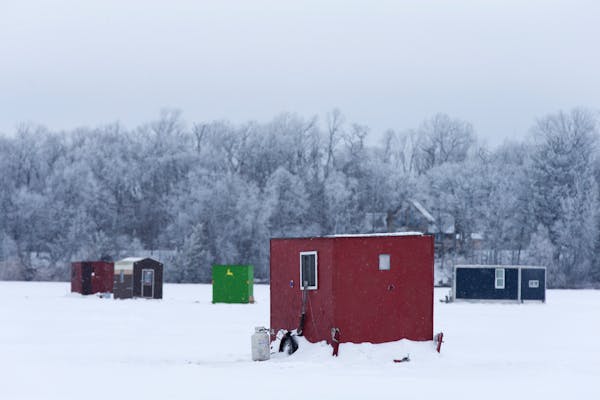North Shore rivers and other tributaries to Lake Superior are still asleep, but last year's remarkable steelhead run and intrigue about the 2016 return are increasing anticipation for April fishing from Duluth to Grand Marais and beyond.
"Last year was pretty darn good, so we are hoping for another one," said Russ Francisco of Marine General in Duluth.
According to the Rainbow Trout Management Summary for the Minnesota Waters of Lake Superior, the state Department of Natural Resources (DNR) recorded a shorewide catch of 3,588 steelhead last spring, 40 percent more than the historic average. The spike was achieved despite a low turnout of anglers, including some who were deterred by on-again, off-again stream flows.
Nick Peterson, a migratory fish specialist for the DNR in Duluth, said angling hours in April and May last season declined by 32 percent to 21,120 for the period. Together with the abundance of fish, North Shore anglers enjoyed the highest steelhead catch rates in at least 23 years.
"Last year it was right on the money in terms of timing of the spring," Peterson said.
Fishable river flows sparked by pulses of rain were a welcomed change from the previous two springs, when late ice and cold disrupted spawning runs. By contrast in 2015, Duluth-area streams started to clear in early April and all rivers up the shore were free of ice by late-April. That could be the case again this year.
Fishing guides such as Carl Haensel, the northern Minnesota vice chair for Trout Unlimited, keep an eye on the North Shore snowpack. He said the snow is "adequate" right now for a fair runoff, but less than ideal. The steelhead run hits high gear when the streams are flowing at temperatures around 40 degrees.
"Last year's steelhead run was one of the best, by far, in recent memory," Haensel said. "We are very hopeful that's going to continue."
The DNR surveys anglers at 18 North Shore tributaries and operates a steelhead fish trap on the Knife River. Steelhead returns in 2015 were the highest observed since the trap became operational in 1996, the agency said.
Craig Wilson, president of the Lake Superior Steelhead Association, said the flourish last year could be attributed in part to good stocking from 2008-10. Eggs were collected from wild adults, hatched in DNR facilities and fry returned to the river. If the young mature in the river for two years before swimming to Lake Superior, they have an approximately one-in-eight chance of returning to spawn four or five years later, Wilson said. They can return to spawn six times in their lifetimes.
"We are starting to see stocking make a difference," he said.
But Peterson said returns are difficult to predict from year to year, and low returns are possible. He said DNR stream assessments in the Knife River and its tributaries found few juvenile steelhead from the 2011 and 2012 year classes.
"The influence of these weak year-classes on adult returns should start to be realized with adult returns in 2016," Peterson wrote in his latest report.
Kamloops crossing
The DNR will involve steelhead anglers in a new study of fish genetics to police hybridization believed to be taking place between wild steelhead and stocked Kamloops rainbow trout. The survey will rely on the removal of fish scale samples for analysis by the DNR. Peterson said he will introduce the project at the upcoming Great Waters Fly Fishing Expo March 18-20 at Century College in White Bear Lake.
Wilson said Kamloops were introduced to the North Shore for the benefit of anglers because steelhead were placed off limits in the late 1990s as a catch-and-release species. But now, anglers are catching more steelhead and Kamloops are straying beyond the Lester and French rivers where they are stocked.
Haensel said male Kamloops have been observed in some instances pairing up with female wild steelhead. If crossbreeding became a trend, studies have shown that it could be detrimental to the steelhead population because hybrids are not as fit to survive. "That's a challenge we are trying to address," he said.
Meanwhile, Kamloops anglers are lobbying for the best possible stocking plan. A group called Kamloops Advocates fears that the DNR will abandon its French River Cold Water Hatchery for financial reasons even though the hatchery provides the best combination of stocking size, stocking timing, and imprinting for success in Lake Superior.
Tony Kennedy • 612-673-4213

Is the east side the best side in high school baseball? Poll has an answer.
Spanish judge freezes a bank account of Piqué's company amid probe into Saudi deal to host Super Cup

Jamal Murray sinks shot at buzzer to cap 20-point comeback and lead Nuggets past Lakers 101-99

